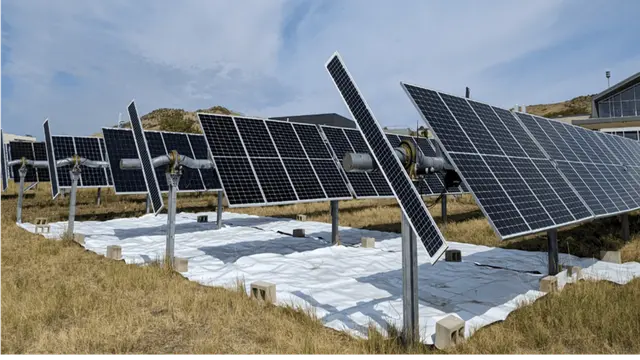Researchers have made a groundbreaking advancement in solar technology, heralding a significant boost in solar panel efficiency.
Scientists from the University of Ottawa, in collaboration with the National Renewable Energy Laboratory (NREL), have developed an innovative method to enhance solar energy production by 4.5%.

By placing reflective surfaces underneath solar panels, this new technology offers promising implications for solar energy’s feasibility and effectiveness worldwide.
The collaborative study, led by Mandy Lewis and supported by Professor Karin Hinzer from the University of Ottawa’s SUNLAB, focuses on artificial ground reflectors.
These reflectors are highly reflective white surfaces strategically positioned directly beneath bifacial solar panels.
Unlike conventional solar panels, bifacial panels capture sunlight from both sides, and this strategic placement allows for a more efficient absorption of solar energy.
Historically, solar technology began taking shape in 1939, but it was not until 1954 that Bell Labs introduced the first commercial solar cell.
The solar industry gained momentum in the early 2000s due to increasing environmental concerns and the demand for renewable, efficient energy sources.
The development of bifacial solar cells in the 1970s further advanced solar energy collection, offering better efficiency than traditional single-sided panels.
Canada’s geographic challenges, characterized by extensive snow cover for nearly half the year, could be significantly alleviated by this innovation.
The reflectors’ potential to optimize energy production has significant advantages in areas where snow cover or limited space hinders solar panel efficiency.
The technology’s appeal is global; with 4% of the world’s lands classified as sandy deserts, these regions too could see substantial energy gains.
Furthermore, by enhancing the power generation per land area, this advancement makes solar installations more feasible in densely populated urban areas with limited space.
This represents an essential step for cities striving for greater sustainability and reduced emissions.
This discovery underscores the potential for solar technology to adapt to various geographical challenges while also making strides towards sustainability.
The collaboration between the University of Ottawa and NREL is a beacon of promise for solar technology’s future.
As more scientists aim to tackle climate change through enhanced renewable energy solutions, advancements like these push the boundaries of what is possible.
This study not only opens doors to improved solar energy production but also reinforces the notion of solar technology as a sustainable, zero-emission energy source.
The full study findings have been published in the journal Progress in Photovoltaics, casting a hopeful light on the future of solar energy.
